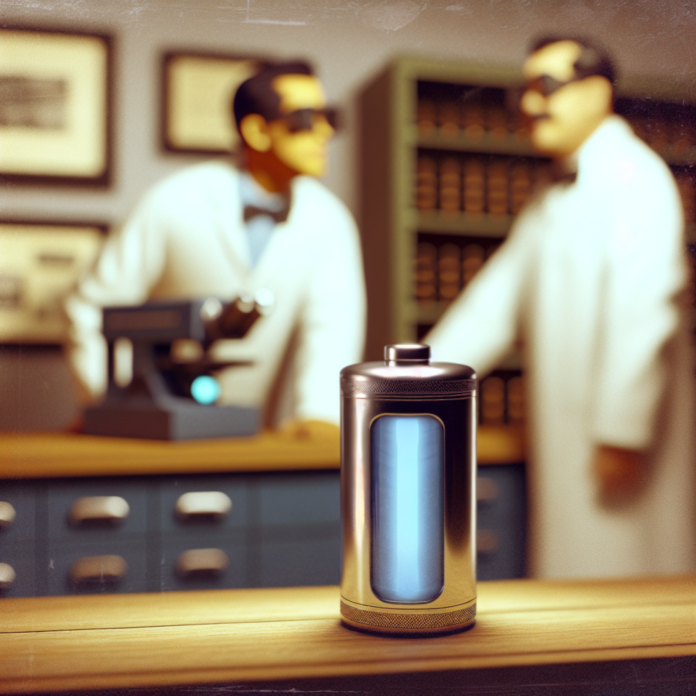Revolutionary Nuclear Battery Promises Decades of Clean Energy on a Single Charge
Introduction: A New Era in Battery Technology
Energy storage is key to the future of renewable technologies, electric vehicles, and sustainable infrastructure. Recently, a breakthrough in battery innovation has sparked excitement across scientific and energy communities. A new type of nuclear battery promises to last for decades—yes, decades—on a single charge, redefining what we thought was possible in long-term power solutions.
What Is a Nuclear Battery?
Often misunderstood, nuclear batteries are not the same as the reactors found in power plants. Traditional nuclear batteries—also known as radioisotope thermoelectric generators (RTGs)—convert heat from the decay of radioactive isotopes into electricity. They’ve long powered spacecraft like the Voyager probes. However, these older systems are bulky and not ideal for everyday applications.
The latest advancement in nuclear battery technology changes that narrative. Researchers have created a “safe” nuclear battery that’s compact, efficient, and can last up to 50 years without recharging. The innovation is being hailed as a turning point for applications in medical devices, space exploration, and even consumer electronics.
How Does the New Nuclear Battery Work?
Developed using diamond semiconductors and radioactive isotopes—most commonly carbon-14 (C-14)—the new nuclear battery converts radiation into electricity with high efficiency and minimal risk. The process involves placing the radioactive isotopes between ultra-thin layers of synthetic diamond. As the isotope decays, it emits beta particles that interact with the diamond substrate, generating a small but steady electrical current.
This nanogenerator, often referred to as a diamond nuclear battery (DNB), is solid-state with no moving parts, meaning it is extremely durable and resistant to environmental wear and tear. Since the materials are encapsulated in a structure physically similar to a gemstone, they offer a safe and stable power source that poses no threat of meltdown or explosion.
Longevity Redefined: Powering Devices for 50+ Years
The most significant advantage of this new nuclear battery is its longevity. By using carbon-14, which has a half-life of 5,730 years, the battery can theoretically provide power for more than half a century. The creators claim that depending on use case, devices could function non-stop for 20, 30, or even 50 years without maintenance or replacement.
Applications in Medical and Military Equipment
Pacemakers and other critical medical devices are among the most promising applications. Currently, these devices require regular battery replacements, exposing patients to repeated surgical procedures. A decades-long battery could eliminate that need, significantly improving patient quality of life and reducing healthcare risks and costs.
Military operations could benefit as well. Equipment deployed in remote or hostile environments often needs an uninterrupted power supply for long durations. Long-lasting nuclear batteries can provide that, with added resilience to temperature extremes and physical shock.
Space Exploration: The Next Frontier
Space missions require reliable energy over long timeframes. Traditional solar panels have limitations, especially beyond Mars where sunlight is scarce. This advanced nuclear battery offers a lightweight and long-term energy solution for rovers, satellites, and deep space probes.
Safety First: Addressing Radiation Concerns
One major hurdle for nuclear-powered devices, especially those intended for public use, is safety. Understandably, the word “nuclear” carries a stigma. But researchers emphasize that this new battery technology is extremely safe. The carbon-14 isotope used emits weak radiation that cannot penetrate human skin. Furthermore, it’s encapsulated in multiple layers of protective synthetic diamond, ensuring the material cannot escape into the environment.
Experts point out that you’d receive more radiation from a household smoke detector or taking a cross-country flight than from one of these batteries. This assurance allows for broader adoption, from industrial use to potentially even consumer electronics like smartphones and wearables in the future.
Environmental and Economic Benefits
Aside from performance, nuclear batteries offer significant environmental advantages. Unlike traditional lithium-ion batteries, which degrade over time and result in toxic waste, these nuclear batteries are designed to last decades—dramatically reducing e-waste.
Mining and processing lithium and cobalt also have environmental and ethical concerns, including labor rights violations and high energy consumption. In contrast, nuclear batteries using carbon-14 can be produced from graphite blocks—a byproduct of existing reactors—meaning they can actually repurpose nuclear waste rather than create it.
Challenges and Limitations
Despite its promise, the new nuclear battery is still in the development phase. Mass adoption requires overcoming several hurdles:
- Cost: Manufacturing diamond-based components and isolating carbon-14 isotopes remains expensive.
- Power Output: Current prototypes produce a relatively low wattage, making them unsuitable for high-demand devices like electric vehicles.
- Public Perception: Widespread apprehension over radioactive materials must be addressed through education and regulation.
Nevertheless, ongoing research and improvements in materials science could lower costs and boost output over time.
When Will We See Nuclear Batteries in Use?
Some prototypes are already undergoing testing for use in aerospace and medical sectors. Commercial rollout for consumer products is likely still years away, but the momentum is unmistakable. With investment from both government and private sectors—including defense and tech companies—the timeline is accelerating rapidly.
Conclusion: A Recharge-Free Future
The nuclear diamond battery marks a massive leap in power storage technology. By combining the near-indestructible nature of diamond with the sustainable energy of radioactive decay, scientists have crafted a battery that could run for decades without needing a recharge or replacement. This innovation holds game-changing potential across industries—from medicine and defense to planetary exploration.
As development continues and adoption expands, one thing is clear: the battery of the future may not be one you plug in nightly—it might be one you never unplug at all.
SEO Keywords:
nuclear battery, diamond battery, long-lasting battery, carbon-14 battery, safe nuclear energy, medical device power, space mission battery, nuclear battery safety, clean energy innovation, low-maintenance battery technology


